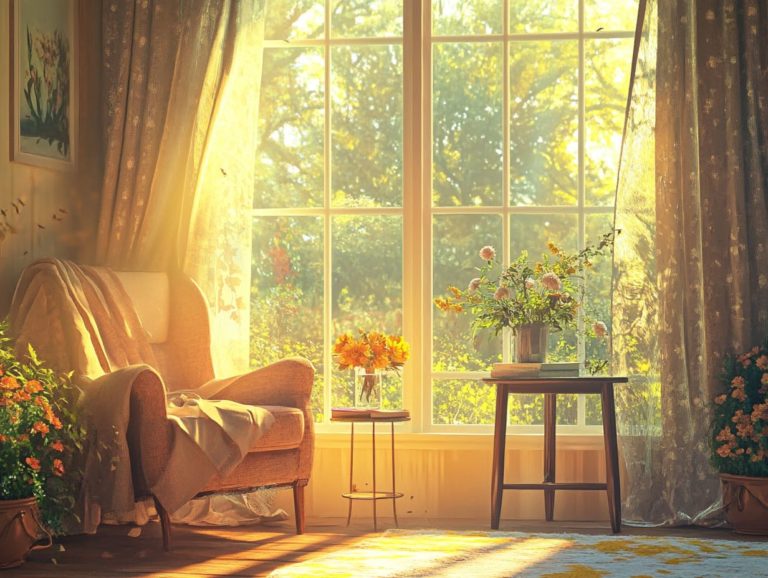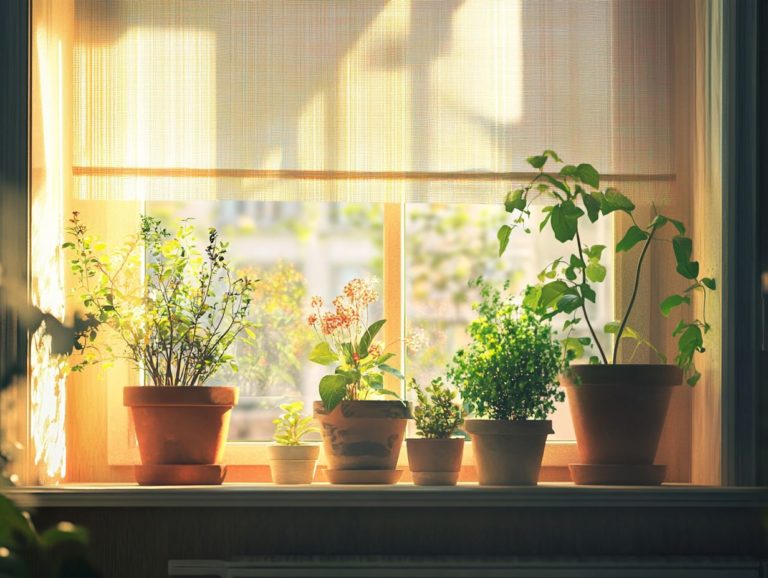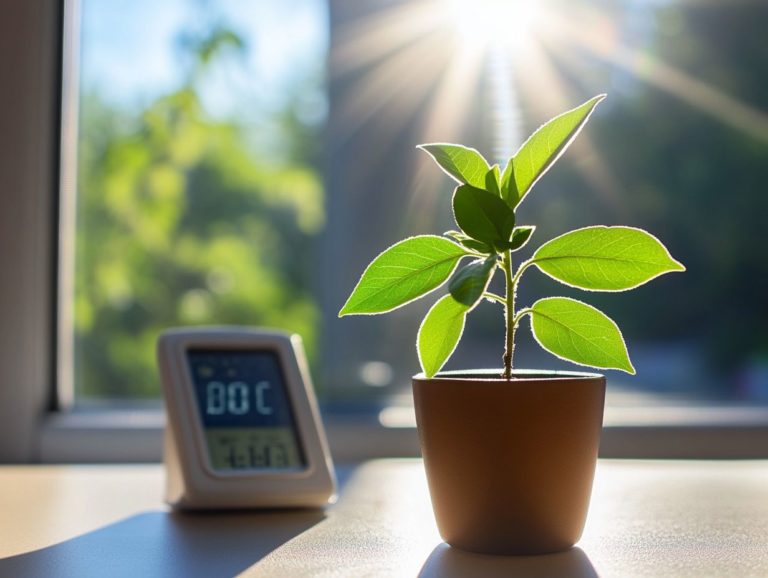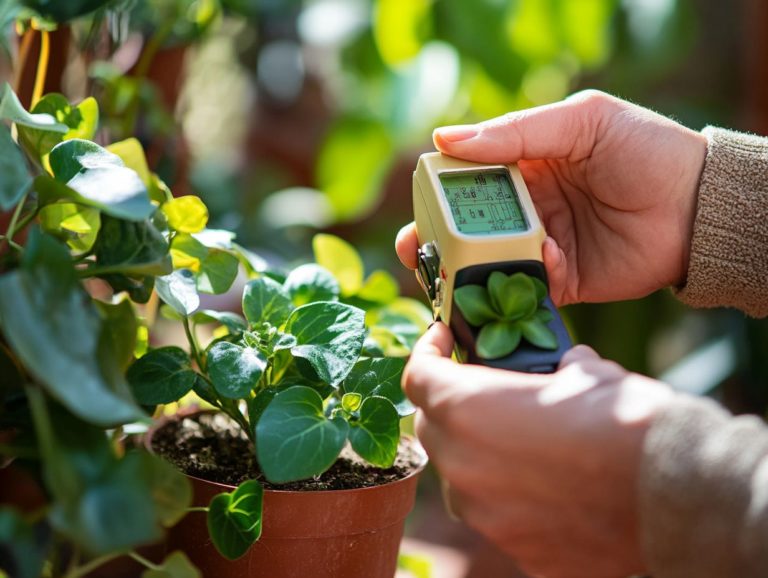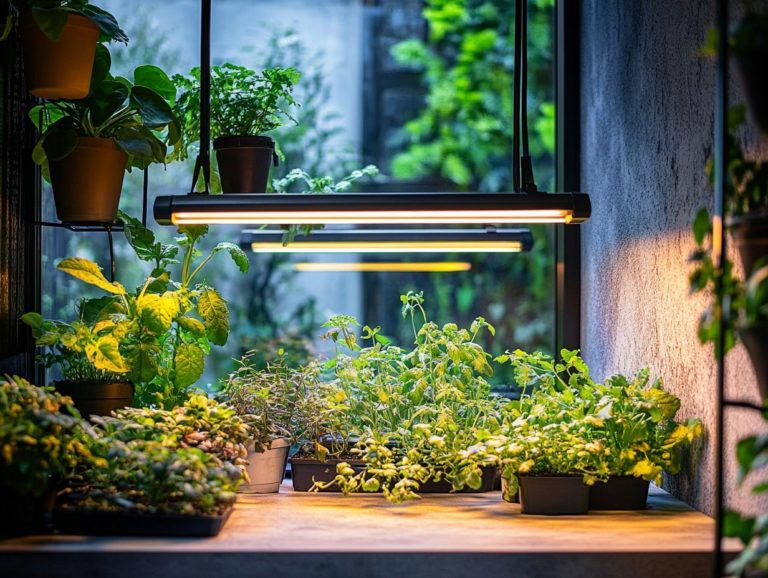UV Light Effects on Indoor Plants
Unlock the secrets of UV light to cultivate indoor plants with finesse! While it can substantially boost plant growth and health, it also presents potential risks if not handled with care.
This article explores how plants react to UV light, highlighting its benefits and the possible damages that can arise.
You ll find guidance on selecting the right UV light, best practices for its application, and alternative methods to ensure your plants receive the crucial UV exposure they need.
Explore this information to master the art of creating the ideal environment for your indoor garden!
Contents
- Key Takeaways:
- Understanding UV Light and Plants
- Benefits of UV Light for Indoor Plants
- Potential Harmful Effects of UV Light
- Choosing the Right UV Light for Indoor Plants
- Proper Usage and Maintenance of UV Lights for Plants
- Alternative Methods for Providing UV Light to Plants
- Frequently Asked Questions
- What are the effects of UV light on indoor plants?
- How does UV light affect the color of indoor plants?
- Do all indoor plants require UV light?
- Can UV light be used as the sole source of light for indoor plants?
- How can I protect my indoor plants from excessive UV exposure?
- Are there any benefits of UV light for indoor plants?
Key Takeaways:
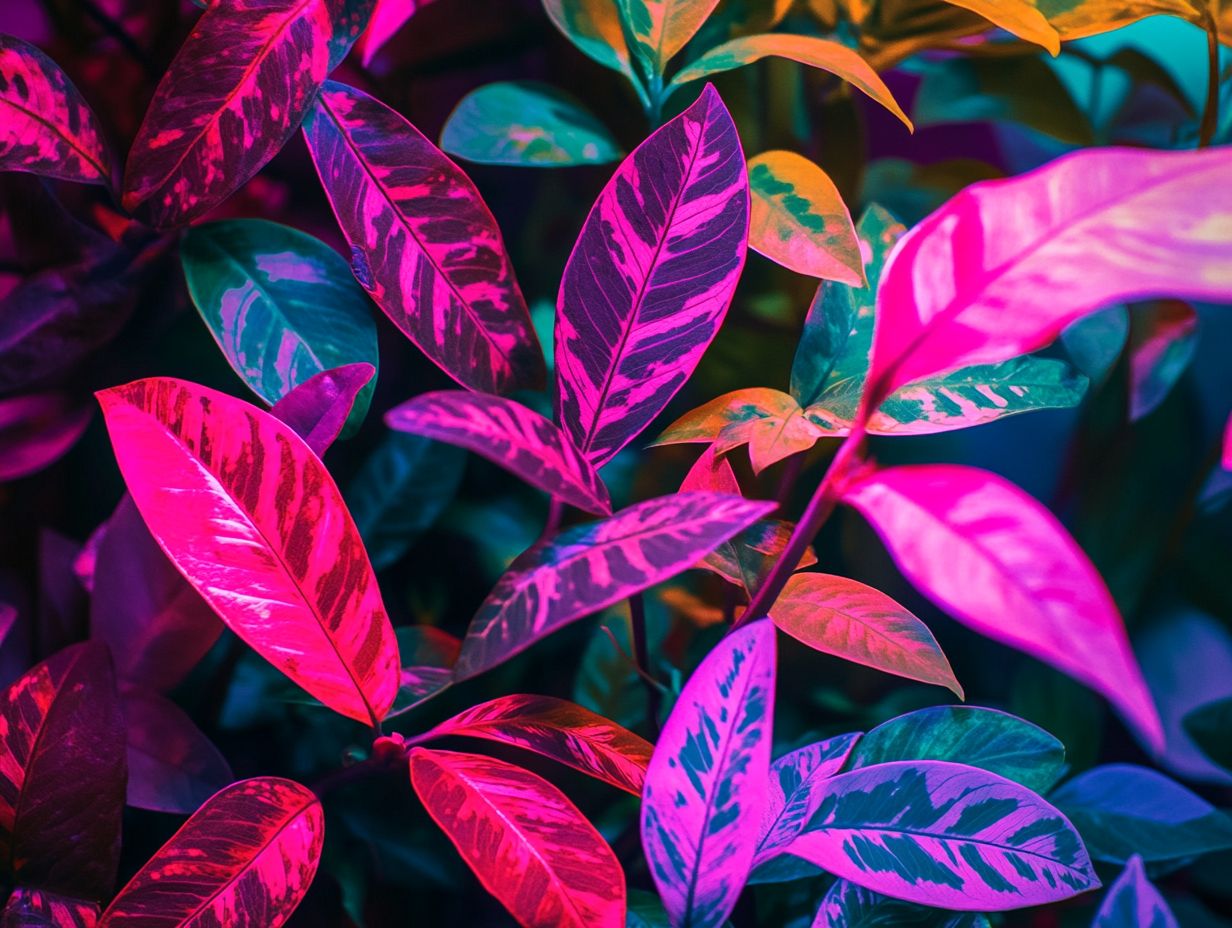
- UV light is a form of electromagnetic radiation that benefits indoor plants by enhancing growth and health.
- However, overexposure to UV light can cause damage, making it important to choose the right type of UV light and maintain its usage carefully.
- Natural sources of UV light, such as sunlight, may be a more cost-effective and safer alternative to artificial UV lights for indoor plants.
Understanding UV Light and Plants
Ultraviolet light, particularly the UV-A and UV-B wavelengths, plays an essential role in plant growth by influencing critical processes like photosynthesis and the production of protective compounds that help plants.
Grasping how plants react to these specific types of ultraviolet radiation is crucial for optimizing your indoor growing conditions. This understanding enhances chlorophyll production and ensures overall plant health.
With this knowledge, you can implement more effective growing strategies whether for commercial endeavors or personal projects boosting resin production and enhancing the flavor of your final yields.
What is UV Light and How Do Plants Respond?
UV light refers to an intriguing segment of the light spectrum that escapes human detection, comprising UV-A and UV-B wavelengths. These wavelengths significantly influence plant responses, particularly in photosynthesis and chlorophyll synthesis.
Each wavelength plays a unique role in plant development. UV-A, ranging from 320 to 400 nanometers, enhances photosynthetic efficiency by promoting chlorophyll production. In contrast, UV-B, spanning from 280 to 320 nanometers, triggers protective responses and prevents overheating in plants.
When exposed to UV-B light, plants ramp up the production of protective compounds, which offer UV protection and elevate the flavor and aroma of specific crops.
By grasping these interactions, you can significantly enhance agricultural practices and crop management, ensuring optimal growth and impressive yields.
Benefits of UV Light for Indoor Plants
The advantages of UV light for your indoor plants are extensive, especially in promoting vigorous growth and achieving higher-quality yields rich in terpenes and cannabinoids.
Carefully managing UV exposure optimizes energy efficiency and cultivates the ideal conditions for healthier plants. This thoughtful approach enhances your greenery’s vitality and elevates the overall quality of your harvests.
Enhanced Growth and Health Benefits
Exposure to UV light can significantly enhance the growth of your indoor plants while offering remarkable health benefits. It primarily stimulates chlorophyll production and the synthesis of protective compounds.
This process improves your plants’ ability to photosynthesize and fortifies them against pests and diseases. Certain varieties of tomatoes and bell peppers truly flourish under UV radiation, developing richer flavors and increased nutritional value. Herbs like basil and mint enhance their essential oil production, enriching their aromatic profiles and amplifying potential health benefits.
By utilizing the strength of UV light, you can cultivate a thriving environment for your indoor garden that promotes overall plant vitality and elevates aesthetic appeal.
Start using UV light today to transform your indoor garden!
Potential Harmful Effects of UV Light
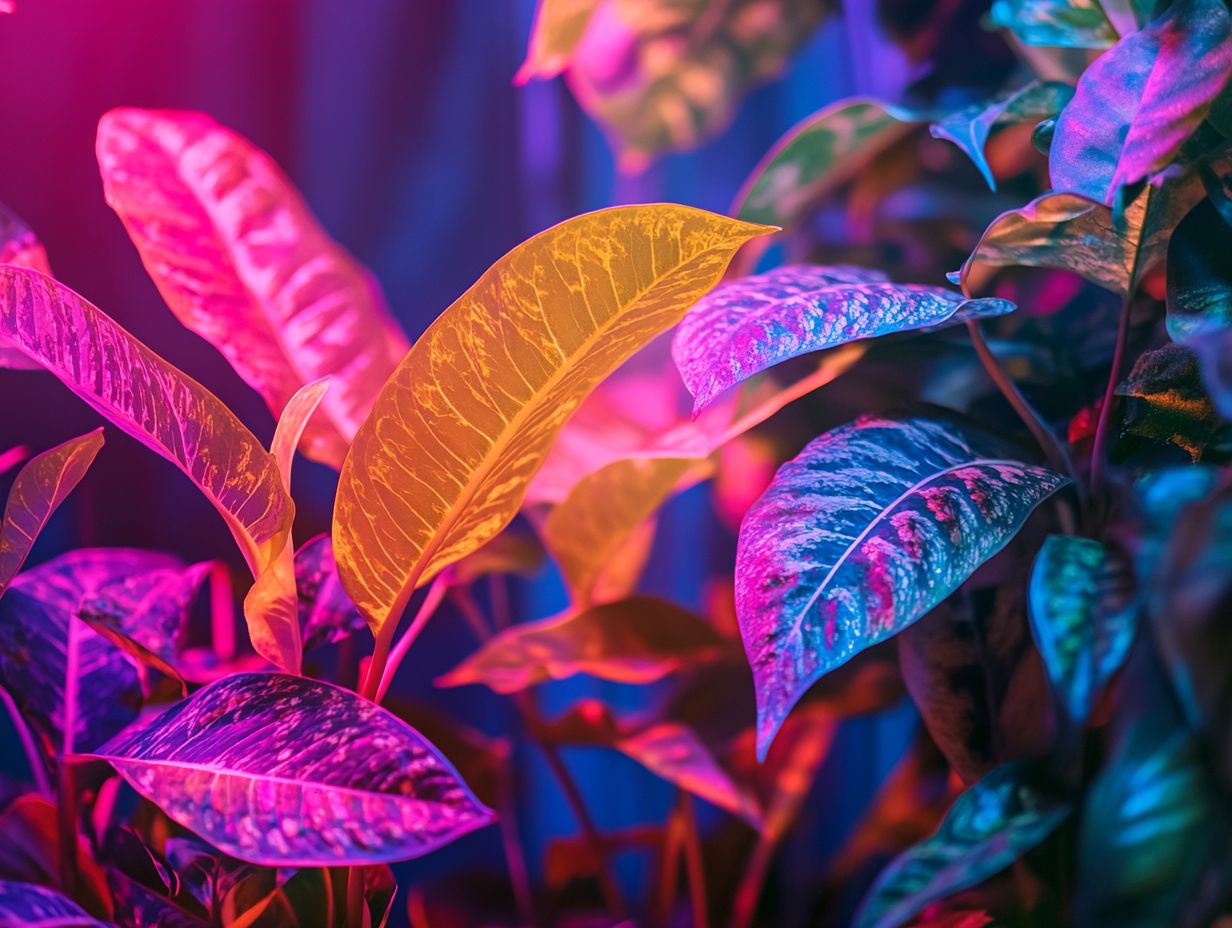
While UV light has many advantages for plant growth, it can also pose significant risks if not managed properly. Mismanagement can lead to adverse effects, such as bleaching, excessive water loss, and damage to plant tissues.
Damage and Risks to Plants
Excessive UV light can harm your plants, causing not only tissue bleaching but also increased water loss, threatening their overall health.
When UV radiation rises, you may notice more sunburn on leaves. This weakens their structural integrity, making them more vulnerable to pests and diseases. Such damage can compromise both the quality and yield of your crops.
To protect your plants, consider using shade cloths or UV-reflective coatings on your greenhouses. Monitoring UV levels with specialized sensors allows you to take timely action when needed.
Incorporating drought-resistant plant varieties can also help your plants withstand challenging environmental conditions. Educating yourself about various strategies to safeguard your plants is essential for ensuring their health.
Choosing the Right UV Light for Indoor Plants
Selecting the right UV light for your indoor plants is crucial for optimizing their growth and overall health. You have several options, including LED grow lights, T5 grow lights, and HPS grow lights.
Each choice has unique benefits, allowing you to tailor your lighting to suit your plants’ needs.
Factors to Consider and Types of UV Lights
When choosing UV lights for your indoor plants, consider various factors like energy efficiency, the types of plants you re caring for, and the light spectrum they need. Familiarizing yourself with different types of UV lights, such as LED and T5, can enhance your decision-making.
These factors are key to how well your plants will flourish under artificial lighting. For instance, LED lights are known for their long lifespan and low heat emission, making them great for sensitive plants that struggle with heat. T5 lights are celebrated for their high lumen output, providing strong illumination during crucial growth phases.
While HPS lights may not be the most energy-efficient, they produce a spectrum rich in red and orange wavelengths, greatly enhancing flowering and fruiting stages. Understanding these distinctions will help ensure optimal health and growth for your plants.
Proper Usage and Maintenance of UV Lights for Plants
Using and maintaining UV lights properly is key to your plants’ health and growth. Focus on adequate light control, the right exposure time, and necessary safety precautions to prevent damage to your plants.
Tips for Safe and Effective Use
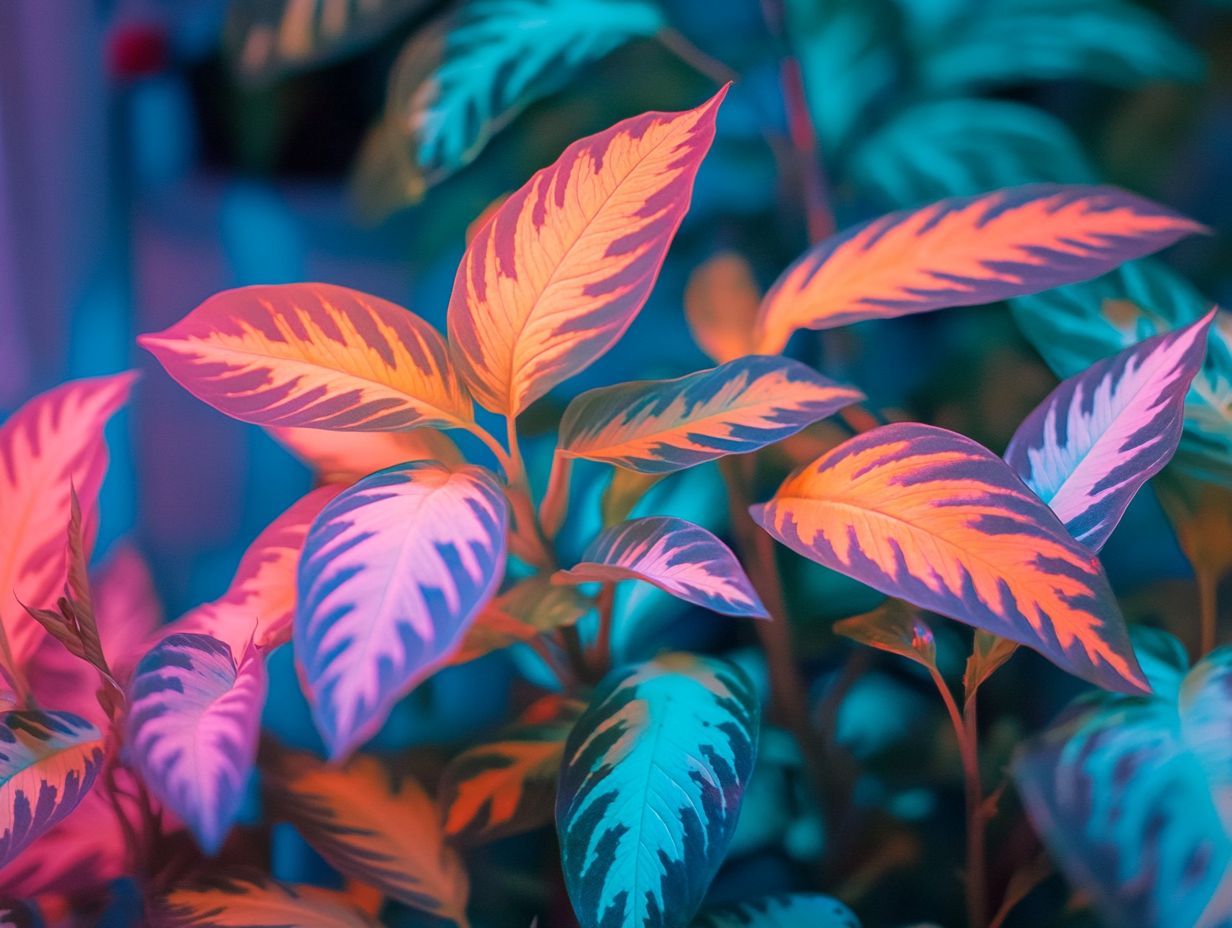
For safe and effective use of UV lights, follow specific guidelines regarding exposure time and implement safety precautions to protect yourself and your plants.
Understanding the ideal exposure duration is crucial; generally, short sessions of about 30 minutes to an hour are beneficial, depending on light intensity and plant type. Monitoring the distance between the light source and your plants is also vital to prevent damage.
Regular maintenance of your UV equipment ensures optimal functionality. Cleaning the bulbs and checking for wear and tear will keep the system running efficiently. Also, wearing protective eyewear and skin coverings helps mitigate health risks, allowing you to enjoy the benefits of UV lights while reducing potential harm.
Alternative Methods for Providing UV Light to Plants
Exploring alternative methods for delivering UV light to your plants can offer remarkable advantages. Whether you choose the natural brilliance of sunlight or innovative artificial UV light solutions, consider incorporating solar control window film to enhance light transmittance.
This approach not only maximizes light exposure but also cultivates a healthier environment for your plants to thrive.
Comparing Natural and Artificial UV Light Sources
When comparing natural and artificial UV light sources, you’ll find that both have unique advantages and can effectively enhance plant growth. However, their intensity, duration, and overall impact on plant health do vary.
Natural sunlight, for instance, offers a full spectrum of light, including UVA and UVB rays, which are essential for photosynthesis and stimulating crucial processes like flowering and fruiting. To learn more about using sunlight for indoor plants effectively, artificial UV light sources, such as LEDs and fluorescent tubes, can be customized to emit specific wavelengths, making them ideal for targeted growth applications.
However, artificial sources often lack the consistent intensity and duration that natural sunlight provides, potentially resulting in less vigorous growth if not managed carefully.
Artificial UV lighting allows for year-round cultivation, but it’s essential to be cautious. Overexposure can lead to burned plants, and if the settings aren t properly adjusted, you might miss out on the necessary wavelengths for optimal development.
Frequently Asked Questions
What are the effects of UV light on indoor plants?
UV light can have both positive and negative effects on indoor plants. On one hand, it can help stimulate growth, increase plant size, and produce more flowers. On the other hand, excessive UV exposure can damage the plant’s leaves and reduce its overall health.
How does UV light affect the color of indoor plants?
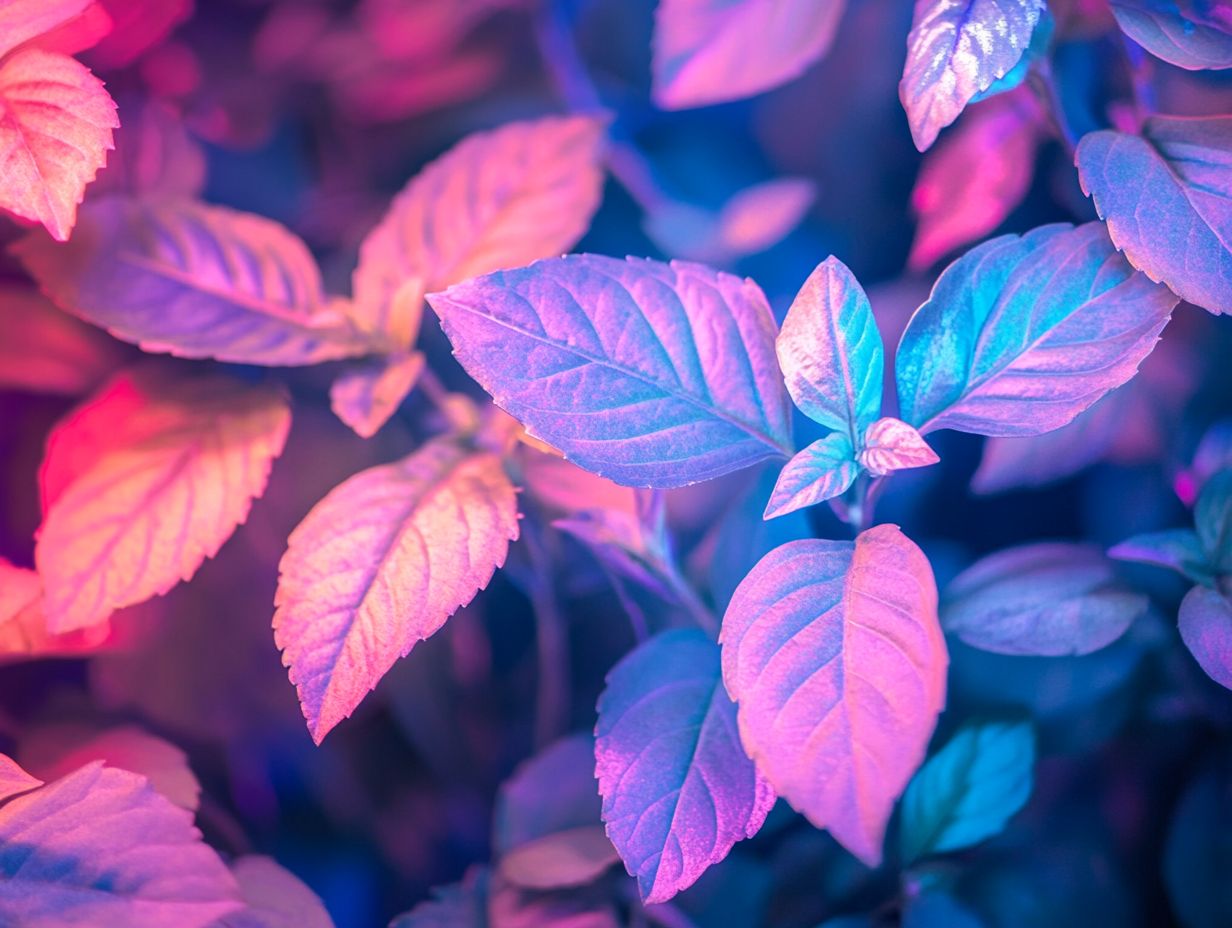
UV light can enhance the color of indoor plants by increasing the production of certain pigments, such as anthocyanins, which give plants a darker, richer color. However, too much UV exposure can also cause the leaves to turn yellow or brown, indicating damage to the plant.
Do all indoor plants require UV light?
No, not all indoor plants require UV light to thrive. In fact, some plants, such as ferns and peace lilies, do better in low light conditions and may even be harmed by excessive UV exposure. It’s important to research your specific plants’ needs before exposing them to UV light.
Can UV light be used as the sole source of light for indoor plants?
No, UV light should not be used as the sole source of light for indoor plants. While it can provide benefits, plants also need other spectrums of light, such as red and blue, to fully grow and thrive. A balanced combination of different light sources is ideal for indoor plants.
How can I protect my indoor plants from excessive UV exposure?
There are several ways to protect your indoor plants from excessive UV exposure. You can use a sheer curtain or UV-blocking film on windows to filter out some of the UV rays. Adjusting the position of your plants to ensure they are not directly in the path of intense UV light is also a good practice. Lastly, regularly monitoring your plants’ health and adjusting their lighting accordingly can help prevent UV damage.
Are there any benefits of UV light for indoor plants?
Yes, UV light offers some benefits for indoor plants. It can help stimulate growth and enhance the color of plants. UV light can also increase the production of essential oils in herbs and improve the flavor of fruits and vegetables in indoor gardens. However, it’s crucial to provide the right amount of UV exposure and monitor the health of your plants to prevent any negative effects.


